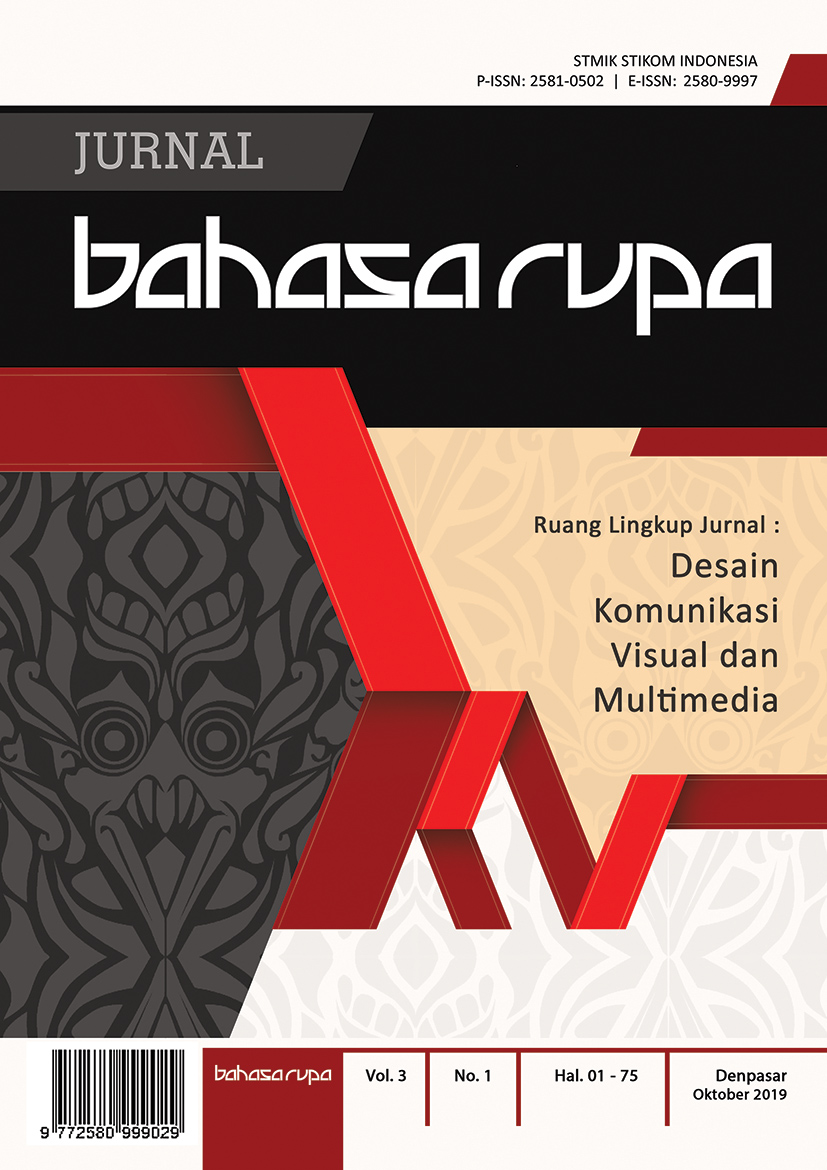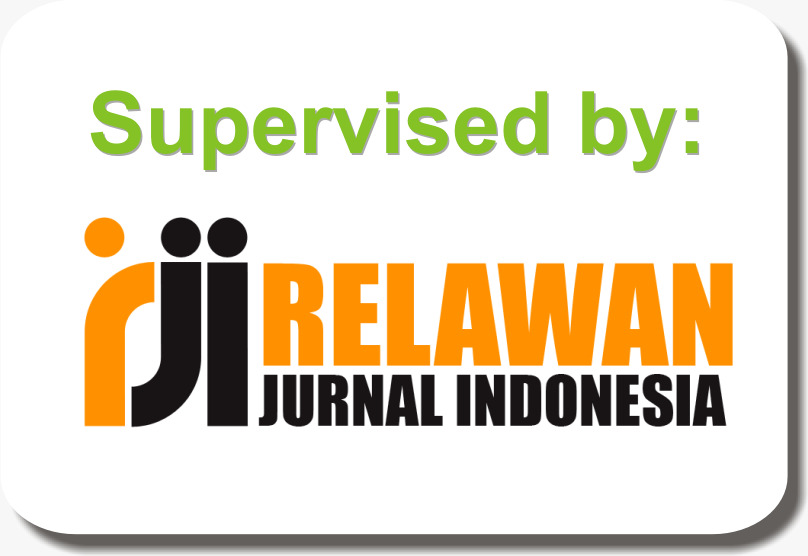MOTION GRAPHIC "AKHLAK" SEBAGAI MEDIA EDUKASI PENYIMPANGAN PERILAKU SOSIAL PADA REMAJA
DOI:
https://doi.org/10.31598/bahasarupa.v3i1.432Keywords:
Teenager, Deviations of Social Behavior, Educational Media, Animation, Motion Graphic, MDLCAbstract
Adolescence is a transition from children to adulthood, usually this is a very vulnerable period for parents because at this age children begin to look for identity. Teenagers begin to want to have their own desires and no longer want to be regulated by parents because they already feel as adults. Environmental factors in the residence and school environment are very influential on the stability of development in adolescence. Teenagers who are out of control and unable to control themselves will very easily fall into social behavior deviations such as fighting with friends, brawl to drug abuse. To help the school and parents in overcoming this problem, media education needs to be deviated social behavior in adolescents based on visual multimedia. Visual multimedia technology was chosen because this media tendency is much easier to be accepted and understood by teenagers compared to just a lecture or seminar. The making of educational media for social behavior deviations in adolescents was built using motion graphic techniques. Then for the development method used is the Multimedia Development Life Cycle. The results obtained in this study in the form of motion graphics with the title of Morals with duration 00: 02:20.
References
Suryani, “Perspektif Perilaku Menyimpang Anak Remaja : Studi Berbagai Masalah Sosial,†Sulesana, vol. 8, no. 1, pp. 119–131, 2013.
S. Hardiyanto and E. S. Romadhona, “Remaja dan perilaku menyimpang (studi kasus remaja di Kota Padangsidimpuan),†J. Interak., vol. 2, no. 1, pp. 23–32, 2018.
R.Mardina, “Kekerasan Terhadap Anak dan Remaja,†InfoDatin, Pusat Data dan Informasi Kemnetrian Kesehatan RI, ISSN 2442-7659, pp. 6, 2018.
Data dan Informasi Profil Kesehatan Indonesia, Kementrian Kesehatan Republik Indonesia, pp. 147, 2018.
G. P. P. A. Yasa, K. A. S. Narpaduhita, and D. G. Purwita, “Perancangan Film Animasi Pendek 2D Sebagai Media Kampanye Penanganan Anxiety Disorder,†J. Bhs. Rupa, vol. 2, no. 2, pp. 146–152, 2019.
N. Mahnun, “Media Pembelajaran (Kajian terhadap Langkah-langkah Pemilihan Media dan Implementasinya dalam Pembelajaran),†an-Nida’, vol. 37, no. 1, pp. 27–35, 2012.
D. H. Pertiwi, Y. Syahrul, “Motion Graphic Masjid Agung Palembang sebagai Media Promosi Pariwisata Kota Palembang,†CSRID (Computer Science Research and Its Development Journal)., Vol.9, no. 3, pp. 167–169, 2017.
M. S. C. P. Somantri, J. D. Rahajaan, S.Sn., “Perancangan Motion Graphic Edukasi Kesehatan Manfaat Menyusui dan Cara Menyapih Bertahap untuk Ibu Usia 20-30 Tahun di Kota Bandung,†e-Proceeding Art Des., vol. 3, no. 3, pp. 688–695, 2016.
A. Purwanti and H. Haryanto, “Pengembangan Motion Graphic Pembelajaran Mata Pelajaran Pendidikan Kewarganegaraan Kelas I Sekolah Dasar,†J. Inov. Teknol. Pendidik., vol. 2, no. 2, pp. 190–200, 2015.
S. W. Septarina, “Perancangan Desain Sistem Tanda Jalan & Tempat Wisata (Studi Kasus : Yogyakarta Dan Sekitarnya),†J. Bhs. Rupa, vol. 2, no. 1, pp. 59–67, 2018.
A. M. R. Youllia Indrawaty, Dewi Rosmala, “Aplikasi Pembelajaran Alat Musik Gitar Menggunakan Model Skenario Multimedia Interaktif Timeline Tree,†J. Inform., pp. 1–12, 2013.
Y. Syahrul, “Penerapan Design Thinking Pada Media Komunikasi Visual Pengenalan Kehidupan Kampus Bagi Mahasiswa Baru STMIK Palcomtech Dan Politeknik Palcomtechâ€, bahasarupa, vol. 2, no. 2, pp. 109-117, Apr. 2019.
Downloads
Published
How to Cite
Issue
Section
License
The author's copyright in the Bahasa Rupa Journal, assigns that the publication of published articles is owned by the editorial board with the author's approval, but the rights are still with the author. The legal rules for accessing digital electronic articles are under license  Attribution-NonCommercial-ShareAlike 4.0 International (CC BY-NC-SA 4.0), which means that the Bahasa Rupa Journal has the right to store, modify, manage databases, maintain and publish articles without the author's permission, but the author as the copyright holder is still written as it is. Articles published in Bahasa Rupa Journals, both in hard and soft copy forms are available as open access, for educational, research and library purposes, and beyond that purpose, the editorial board of the Language and Language Journal is not responsible for illegal copyright infringement. This journal also applies LOCKSS and CLOKSS archiving.
Attribution-NonCommercial-ShareAlike 4.0 International (CC BY-NC-SA 4.0), which means that the Bahasa Rupa Journal has the right to store, modify, manage databases, maintain and publish articles without the author's permission, but the author as the copyright holder is still written as it is. Articles published in Bahasa Rupa Journals, both in hard and soft copy forms are available as open access, for educational, research and library purposes, and beyond that purpose, the editorial board of the Language and Language Journal is not responsible for illegal copyright infringement. This journal also applies LOCKSS and CLOKSS archiving.













.png)





